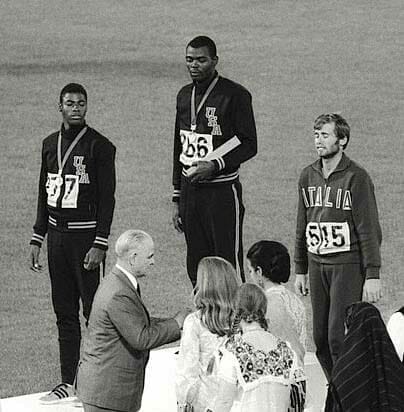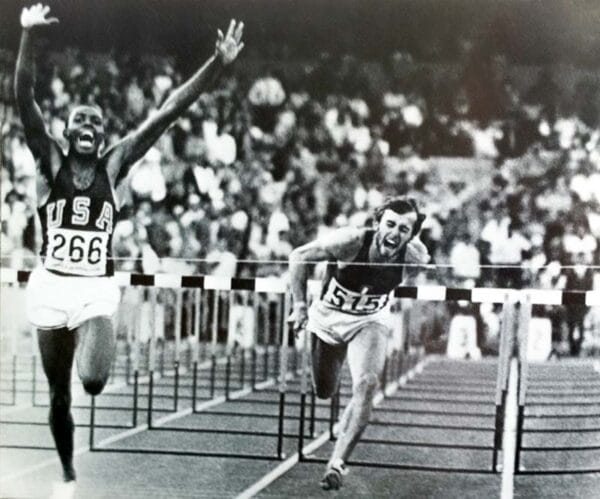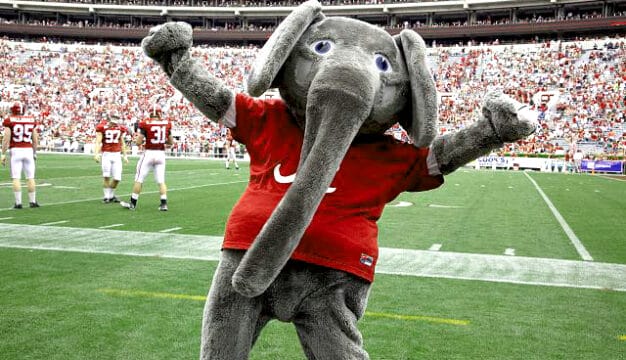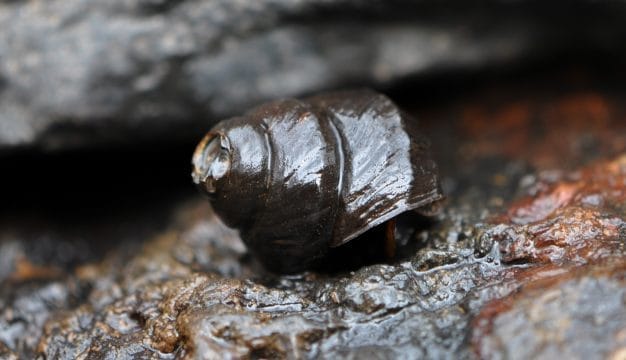Willie Davenport
 Willie Davenport, 1968
Willie Davenport (1943-2002) was an Olympian who garnered international recognition between 1964 and 1976 for his explosive speed and exquisite form in the high hurdles. As a bobsledder in 1980, he became one of the first African Americans to participate in the Winter Olympics and one of only a few athletes to have competed in both the winter and summer Olympic Games.
Willie Davenport, 1968
Willie Davenport (1943-2002) was an Olympian who garnered international recognition between 1964 and 1976 for his explosive speed and exquisite form in the high hurdles. As a bobsledder in 1980, he became one of the first African Americans to participate in the Winter Olympics and one of only a few athletes to have competed in both the winter and summer Olympic Games.
William D. “Willie” Davenport was born on June 8, 1943, in Troy, Pike County, the eldest of seven children. He was nine when his family moved to Warren, Ohio, where, he has stated, he became a loner with a sour attitude, being one of only a few black students in the affluent Howland High School. But he was a natural athlete who excelled in all sports. Although his first love was baseball, it was track that provided him with a personal goal and helped transform his outlook on life. During his junior year, he initially competed in the 100-yard dash and then switched to the 120-yard hurdles, winning the district title. The following year, he set a state record in that event with a time of 14.2 seconds.
After graduation in 1961, Davenport enlisted in the U.S. Army as a paratrooper, and while stationed in Mainz, Germany, from 1961 to 1963, he honed his hurdling technique at a local sports club. In the trials for the upcoming 1964 Olympic Games, he upset five-time Amateur Athletic Union (AAU) national champion Hayes Jones in the 110-meter high hurdles and made the U.S. team. At the games in Tokyo, Japan, however, he pulled a thigh muscle and was eliminated in the semi-finals. Upon his discharge from the Army in 1965, Willie enrolled at Southern University and A&M College, a historically black college in Baton Rouge, Louisiana, where he reigned as the world’s premier high hurdler and during his senior year played halfback for the school’s football team. Davenport secured three 120-yard outdoor titles and five 60-yard indoor AAU titles. In 1968 at Knoxville, Tennessee, he equaled the world record of 13.2 seconds in the 120-yard high hurdles, and in 1969 at Zurich, Switzerland, he equaled the world record of 13.2 seconds in the 110-meter high hurdles. Long-jump champion Ralph Boston nicknamed Davenport “Breeze” for the grace with which he cleared the high hurdles. Remarkably, these feats were achieved with what his coach at Southern University generously described as irregular training. Davenport attributed his success to his ability to beat his opponents psychologically as well as physically and to think his way over each of the ten hurdles.
 Willie Davenport at the Finish Line
The high point of Davenport’s track career occurred at the 1968 Olympic Games in Mexico City, where he captured the gold medal in the 110-meter event with a time of 13.3, equaling the Olympic record. Before the race, he was so nervous that he nearly fell down while removing his sweat pants. Once the starter’s gun went off, as he later recalled, he felt completely confident that he would win the race. The 1968 Olympics featured a number of record-shattering performances by some of Davenport’s fellow U.S. Olympians, but those games are remembered most for the “Black Power” salute staged by his track and field teammates Tommie Smith and John Carlos after placing first and third, respectively, in the 200-meter event. Davenport did not share in their show of solidarity and became dismayed when reporters began asking questions about civil rights and racism and not his event. Although he sometimes felt the anguish of discrimination in his youth, Willie’s focus was on competing to the best of his ability.
Willie Davenport at the Finish Line
The high point of Davenport’s track career occurred at the 1968 Olympic Games in Mexico City, where he captured the gold medal in the 110-meter event with a time of 13.3, equaling the Olympic record. Before the race, he was so nervous that he nearly fell down while removing his sweat pants. Once the starter’s gun went off, as he later recalled, he felt completely confident that he would win the race. The 1968 Olympics featured a number of record-shattering performances by some of Davenport’s fellow U.S. Olympians, but those games are remembered most for the “Black Power” salute staged by his track and field teammates Tommie Smith and John Carlos after placing first and third, respectively, in the 200-meter event. Davenport did not share in their show of solidarity and became dismayed when reporters began asking questions about civil rights and racism and not his event. Although he sometimes felt the anguish of discrimination in his youth, Willie’s focus was on competing to the best of his ability.
After graduating from Southern University in 1969 with a degree in physical education, Davenport held various jobs in the Baton Rouge area to make ends meet. That same year, he married Marian Calvey, with whom he would have three children. Meanwhile, upcoming track and field stars Rod Milburn, Guy Drut, and Thomas Hill were challenging Davenport’s supremacy in the high hurdles. Despite being ten pounds overweight, Davenport qualified for the 1972 Olympics in Munich, finishing fourth in the event. In 1975, Davenport suffered a knee injury followed by a blood clot in his right lung and spent a year on medications. Despite doctors’ predictions that he would never compete again and would always walk with a limp, the 33-year-old qualified for the 1976 Olympic team and raced to a bronze medal in the 110-meter high hurdles in 13.3 seconds in Montreal.
In 1980, Davenport participated in his fifth Olympiad, this time, however, in the Winter Olympics in Lake Placid, New York. Responding to an appeal for more Summer Games participants to apply their athleticism to winter sports, he became a runner in the four-man bobsled competition after only three months of training. His team finished twelfth, but Davenport became the first African American, with teammate Jeff Gadley and Canadian Bob Wilson, to compete in the Winter Games and the fourth American track athlete to compete in both the Summer and Winter Olympics.
 Willie Davenport at 1999 Military World Games
From 1968 to 1980, Davenport served on the United States Olympic Committee as a member of the Board of Directors and Executive and upon retirement from competition in 1982 was inducted into the United States Track and Field Hall of Fame. He was also inducted to the Louisiana Sports Hall of Fame in 1988 and the Olympic Hall of Fame in 1990. Davenport joined the Army National Guard, where he rose to the rank of colonel, and as chief of the Office of Sports Management, he coached the All-Army men’s and women’s track teams to an unprecedented four undefeated seasons between 1993 and 1996. As he was returning from an assignment in Boise, Idaho, to his home in Falls Church, Virginia, Davenport died of a myocardial infarction on June 17, 2002, while changing planes at Chicago’s O’Hare airport. He was buried at Roselawn Memorial Park and Mausoleum in Baton Rouge, Louisiana. Davenport was inducted posthumously into the Alabama Sports Hall of Fame in 2019.
Willie Davenport at 1999 Military World Games
From 1968 to 1980, Davenport served on the United States Olympic Committee as a member of the Board of Directors and Executive and upon retirement from competition in 1982 was inducted into the United States Track and Field Hall of Fame. He was also inducted to the Louisiana Sports Hall of Fame in 1988 and the Olympic Hall of Fame in 1990. Davenport joined the Army National Guard, where he rose to the rank of colonel, and as chief of the Office of Sports Management, he coached the All-Army men’s and women’s track teams to an unprecedented four undefeated seasons between 1993 and 1996. As he was returning from an assignment in Boise, Idaho, to his home in Falls Church, Virginia, Davenport died of a myocardial infarction on June 17, 2002, while changing planes at Chicago’s O’Hare airport. He was buried at Roselawn Memorial Park and Mausoleum in Baton Rouge, Louisiana. Davenport was inducted posthumously into the Alabama Sports Hall of Fame in 2019.
Additional Resources
Hornbuckle, Adam B. “Willie D. Davenport.” In Biographical Dictionary of American Sports, Outdoor Sports, edited by David L. Porter (New York: Greenwood Press, 1988), 447-48.
Myslenski, Skip. “The Woes of Wee Willie Wisp.” Sports Illustrated 30, March 17, 1969, 42-49.
Potts, Don. “Davenport Comebacks to Top.” Track & Field News (October/November, 1968), 22-23.
Weill, Gus. “Interview with Willie Davenport.” Louisiana Legends (Baton Rouge: Louisiana Public Broadcasting, 1983).



